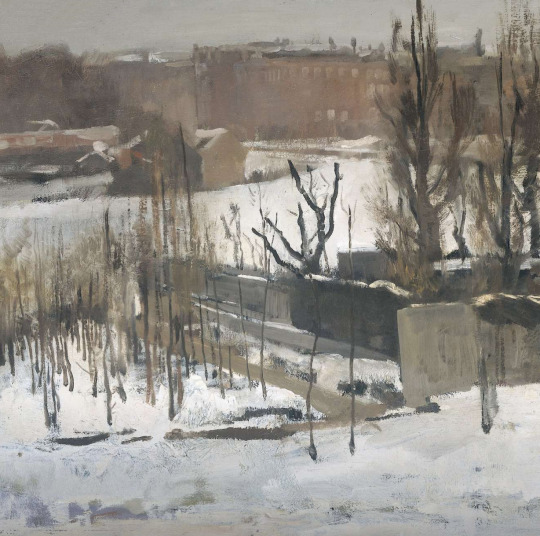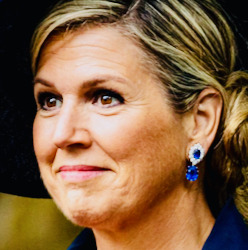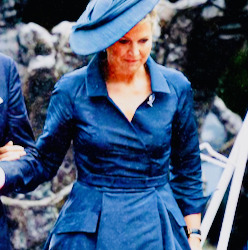#oosterpark
Text






Winter walks.
- Amsterdam
6 notes
·
View notes
Text

October 04, 2022
2 notes
·
View notes
Text

Before sunset.
1 note
·
View note
Text

oosterpark - graphite | 15 x 20
0 notes
Photo

F$CKIN' AM-STER-DAM ! 💚 I'll be making a series of posts about my trip to Amsterdam, where I'll be sharing my thoughts about its extremely beautiful and high vibration, but also, the main shadow aspects of the city! For now, enjoy some nature (and some me 🤣) in one of the city's most beautiful parks! #amsterdam #holland #netherlands #oosterpark (at Oosterpark) https://www.instagram.com/p/ClMpsO2M_ex/?igshid=NGJjMDIxMWI=
0 notes
Text


A snow covered Oosterpark in Amsterdam.
Willem Witsen, watercolor and George Hendrik Breitner, oil painting.
Both probably painted in the winter of 1892, from Witsen's studio, which overlooked the Oosterpark.
69 notes
·
View notes
Photo



Queen Maxima of the Netherlands arrives to attend the Dutch Slavery Commemoration (Herdenking Nederlandse slavernijverleden) at the Oosterpark in Amsterdam, The Netherlands | July 01, 2023
104 notes
·
View notes
Text
Historians calculated the staggering value of colonial profit for Willem III (also king of England, Ireland and Scotland), Willem IV and Willem V for a report published at the request of the Dutch parliament last week before a widely expected apology over slavery from the Dutch king.
The study, State and Slavery, is the first to quantify the financial value to the Dutch House of Orange-Nassau of colonial trade that included enslaving at least 600,000 African men, women and children and between 660,000 and 1 million people from Asia to be tortured, exploited and robbed of their freedom and their names. It is a legacy for which Willem-Alexander is expected to present a formal apology in Amsterdam’s Oosterpark on 1 July, the festival of Keti Koti (breaking the chains), 150 years after Dutch slavery in effect ended.
The €545m equivalent exceeded the money that the rulers, known as Stadhouders, took as heads of the state and military. Between 1675 and 1770, William III netted 1,094,998 guilders in his share of profits from the Dutch East India Company – the equivalent of €196m today.
70 notes
·
View notes
Photo

Ingek73 found this spectacular 1882 property in Amsterdam. It’s got shops on the bottom and 3 house numbers so it can technically be turned into 3 separate properties. It’s got 4 bds., 4 baths, and 2 - 1/2 baths. € 3.400M / $3.578M


There are 4 gorgeous floors and it’s currently set up to fit the current owner’s needs, which looks like elegant shops on the ground floor.



This is the 2nd shop. They’re such pretty high end stores.

Now, moving into the living area, there’s a kitchen.

It looks like a chef’s kitchen with a sunny dining area and fireplace.

Isn’t this a beautiful formal dining room?

Small terrace.

Music room.

Stunning gold wall in the living room.

One of the elegant bedrooms.

And, this other bedroom also has a lovely sitting room.

Pretty, bright stairs going to the 3rd and 4th floors.

This bd. has access to a garden and patio.

A deck on the upper level is perfect for summer dining.

Look at this bath.

Up on the 4th level there is a kitchenette.


Plus a sunny bd. w/a dining/sitting area. There are also original floors throughout.

The gardens are just stunning.


Several patios to choose from.

I don’t know how people can sell property like this. The work and cost of decorating it, alone, not to mention finding something comparable.
https://www.funda.nl/koop/amsterdam/huis-42764579-oosterpark-87-88/
#unique property amsterdam#modern architecture#old house dreams#midnight dreamer house#houses#house tours#home tour#long post#submissions
93 notes
·
View notes
Text









King Willem-Alexander, Queen Máxima, Prime Minister Rutte and a delegation from the cabinet attend the National Commemoration of Slavery in the Oosterpark in Amsterdam. The King gives a speech. The meeting concludes with a wreath-laying ceremony. The Royal Couple lays the first wreath on the occasion of the commemorative year. July 1, 2023.
📷 Patrick van Katwijk
27 notes
·
View notes
Text




Through the Years → Queen Máxima of the Netherlands (1,427/∞)
1 July 2023 | Queen Maxima of The Netherlands attends the Keti Koti commemoration at the national slavery monument in the Oosterpark in Amsterdam, Netherlands. (Photo by Patrick van Katwijk/Getty Images)
20 notes
·
View notes
Text

July 01, 2024
0 notes
Text

I really love oostpark ❤️
1 note
·
View note
Photo




1st July: King Willem-Alexander gave a speech at the National Slavery Monument in Oosterpark, Amsterdam on the 150th anniversary of the abolition of slavery. During his speech, the King apologized for the Netherlands' role in slavery.
“Today I stand before you. Today, as your King and as a member of the government, I make this apology myself. And I feel the weight of the words in my heart and my soul.”
16 notes
·
View notes
Text
Speech by King Willem-Alexander at the commemoration of the role of the Netherlands in the history of slavery, Oosterpark, Amsterdam
01-07-2023
Ladies and gentlemen, here in the Oosterpark, on the Museumplein, in Suriname, in the Caribbean part of our Kingdom, or wherever in the world you are tuning in,
‘Within the city of Amsterdam and its jurisdiction, all men are free, and none are slaves.’
These are the words of a Dutch legal provision from 1644.
We are standing in a city that, for centuries, has prized freedom above all else.
In the capital of a country that, throughout the course of history, has repeatedly battled against tyranny and oppression.
And yet, the principles that were taken for granted within this city and within this country did not apply beyond its borders. Here, slavery was banned. But overseas it was not.
Of all the ways in which a person can be robbed of their freedom, slavery is surely the most painful. The most degrading. The most inhuman.
To view a fellow human being as a commodity, to do with as you please. To use them for profit, as a beast of burden, with no will of their own. To be chained, traded, branded, worked to the bone, punished. Or even killed with impunity.
Recently, the Queen and I have had many conversations with people in the European Netherlands and in the islands of the Caribbean part of the Kingdom. We’ve met people with Surinamese roots, and people with ties to Indonesia. Among them are people who only have to go back three generations to find family members born into slavery.
And they made very clear just how deep the wounds remain.
Thanks to the work of many dedicated researchers, we are learning more and more about the Netherlands’ role in the history of slavery. We know that more than 600,000 people were transported across the Atlantic Ocean from Africa aboard Dutch ships, to be sold as slaves or put to work on plantations. Around 75,000 did not survive the crossing. We also know about the extensive slave trade to the East, in areas controlled by the Dutch East India Company. And we know about the atrocities committed against the indigenous populations of the colonies.
But there is also so much that we don’t know. The archives contain the raw figures. They present the facts with a bookkeeper’s precision. But the voices of the enslaved are lost in the mists of time. Leaving barely a trace behind.
It is awe-inspiring that so many of them found the strength to rise up against their captors, even if it was often an act of simple desperation. From their hideouts in Suriname’s vast forests and swamps, resistance fighters such as Boni, Baron and Joli-Coeur defiantly challenged the inhumanity of slavery. Their heroic deeds, and those of many others, are a testament to a pride and strength that could not be broken.
Very occasionally, we find the voice of a black freedom fighter preserved in the written record. One example is Tula, the leader of the 1795 revolt in Curaçao. Five months ago, the Queen and I stood with our eldest daughter on the site where he lived and worked, the former Knip plantation.
How reasonable and compassionate Tula’s words sound to our modern ears. Invoking the ideals of the French Revolution and the equality of all people, regardless of their skin colour, he said, ‘We do not seek to harm anyone, but want nothing more than our freedom.’
The response from the authorities was brutal and merciless. As punishment, Tula was tortured and then beheaded.
The horrific legacy of slavery remains with us today. Its effects can still be felt in racism in our society.
On 19 December last year, the Dutch prime minister apologised on behalf of the Dutch government for the fact that, for centuries, in the name of the Dutch State, human beings were made into commodities, exploited and abused.
Today I stand before you. Today, as your King and as a member of the government, I make this apology myself. And I feel the weight of the words in my heart and my soul.
But for me, there is another personal dimension.
Slavery and the slave trade are recognised as a crime against humanity. And the Stadholders and Kings of the House of Orange-Nassau did nothing to stop it.
They acted in accordance with laws which at the time were considered acceptable. But the system of slavery illustrated the injustice of those laws.
As the Second World War highlighted more recently, you cannot hide behind laws when your fellow human beings are reduced to animals and subjected to the whims of those in power.
At a certain point you have a moral duty to act. All the more so considering that here, in the European Netherlands, slavery was strictly forbidden. What was thought normal in the colonies overseas – practised on a large-scale and encouraged, in fact – was not allowed here. That is a painful truth.
The independent study I have commissioned will shed more light on the precise role played by the House of Orange-Nassau in our country’s colonial past and the history of slavery. But today, on this day of remembrance, I ask forgiveness for the clear failure to act in the face of this crime against humanity.
I realise only too well that by no means everyone shares the same feelings about this commemoration. And there are people in the Netherlands who feel that apologising now, so long after the abolition of slavery, is going too far. Nevertheless, the vast majority of them do support the fight for equality for all people, regardless of skin colour or cultural background.
I would therefore ask you to open your hearts to all those people who are not here today but who do want to work with you to build a society in which everyone can participate fully. I ask you to respect the differences in people’s experiences, backgrounds and powers of imagination.
During the conversations the Queen and I recently had with the descendants of enslaved people, one said, ‘Let’s not be so anxious. Don’t worry so much about saying the wrong thing’. Someone else said, ‘Let’s embrace our discomfort’.
There’s no blueprint for the process of healing, reconciliation and recovery. Together, we are in uncharted territory. So let’s support and guide each other.
Sixty years ago today, a group of Dutch people of Surinamese origin marched through the centre of Amsterdam waving banners that read ‘Ketie Kotie fri moe de’. They lit the fire of remembrance that we keep alight today.
This is an important day for anyone with ties to Suriname, including those whose forebears travelled to the colony as contract labourers.
I hope that the descendants of enslaved people and of people subjected to forced labour in other parts of the world feel they are part of this gathering. I hope they feel heard. People from the Caribbean part of the Kingdom. And the many Dutch people who have ties to Indonesia, and who carry the pain of great injustice in the past.
We all have our own family history. Our own emotions. Our own cultural traditions that ground us in our communities. Our rituals that comfort us, symbols that encourage us, and words of wisdom that resonate in our hearts.
All those traditions are precious, and they deserve respect. But let us also reach out beyond them to each other. To build a world without racism, discrimination and exploitation.
After acknowledgment and apologies, let us work together to foster healing, reconciliation and recovery. So that we can all be proud of what we share. So that we can say:
Ten kon drai
Times have changed
Den keti koti, brada, sisa
The chains are broken, brother, sister
Ten kon drai
Times have changed
Den keti koti, fu tru!
The chains are broken, it’s true!
14 notes
·
View notes
